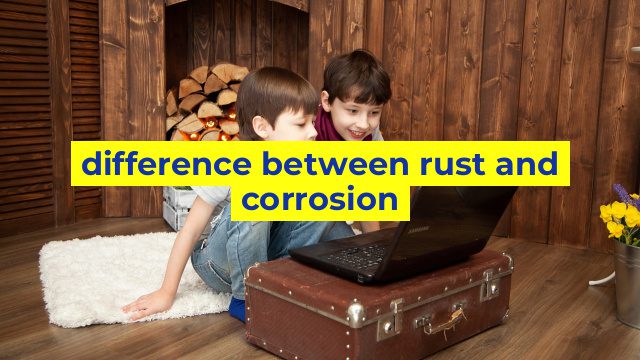The Difference Between Rust and Corrosion
Introduction
When it comes to metal, rust and corrosion are two words that are often used interchangeably. While they both refer to the process of metal breaking down, there are some significant differences between the two. Understanding these differences can help you better protect your metal goods from damage caused by rust and corrosion.
Rust
Rust is a form of corrosion that specifically affects iron and steel. It is caused by the reaction between iron, oxygen, and water, resulting in the formation of iron oxide. Rust can appear as a red or brown color on the surface of the metal, and it is often flaky and brittle.
One of the defining characteristics of rust is that it forms a layer over the metal that can help protect it from further corrosion. However, if the rusting process continues unchecked, it can eventually weaken the metal and cause it to fail.
Corrosion
Corrosion is a more general term that refers to the degradation of any material. In the context of metal, corrosion can refer to a number of different processes that cause the metal to break down. This can include rusting, as well as other forms of oxidation, such as the reaction between copper and sulfur.
Like rust, corrosion can weaken metal over time, making it more prone to failure. Corrosion is also more difficult to prevent than rust, as it can occur in a variety of different environments and under a range of conditions.
Differences Between Rust and Corrosion
While rust is a type of corrosion, there are some key differences between the two. One of the most significant differences is that rust specifically refers to the corrosion of iron and steel. Corrosion, on the other hand, can apply to any material.
Another difference is that rust forms a protective layer that can help slow down the corrosion process. In contrast, other forms of corrosion, such as the reaction between copper and sulfur, do not form this protective layer.
Conclusion
In conclusion, while rust and corrosion are often used interchangeably, they are not the same thing. Rust specifically refers to the corrosion of iron and steel, while corrosion is a more general term referring to the degradation of any material. Understanding the differences between the two can help you better protect your metal goods from the damaging effects of rust and corrosion.
Table difference between rust and corrosion
| Parameter | Rust | Corrosion |
|---|---|---|
| Definition | Rust is a type of corrosion that occurs specifically in iron or steel materials due to the reaction with oxygen and moisture. | Corrosion is the gradual breakdown and deterioration of materials due to chemical reactions with their environment. |
| Occurrence | Rust only occurs in iron or steel materials | Corrosion can occur in a wide range of materials including metals like aluminum, brass, and copper as well as non-metals like plastics and ceramics. |
| Appearance | Rust often appears as a reddish-brown coating on the surface of iron or steel materials. | The appearance of corrosion depends on the type of material and the environment it is exposed to. It can appear as rust, tarnish, discoloration, or even cracks and breaks. |
| Causes | Rust is caused by the reaction of iron or steel with oxygen and moisture. | Corrosion can be caused by a variety of factors including exposure to chemicals, saltwater, or extreme temperatures. |
| Prevention | Rust can be prevented by applying a rust-resistant coating to the surface of the iron or steel material or by keeping the material dry and free from moisture. | Corrosion prevention measures depend on the type of material and the environment it is exposed to. It may involve the use of coatings, inhibitors, or protective measures such as regular cleaning and maintenance. |

